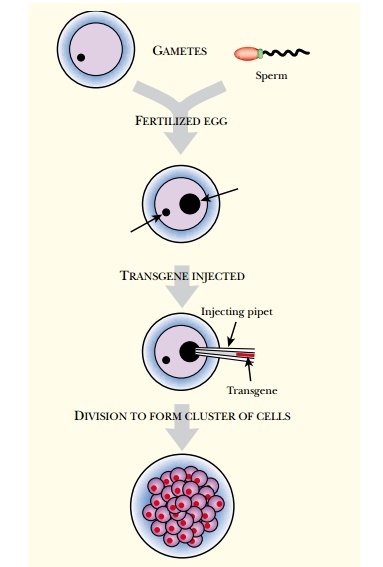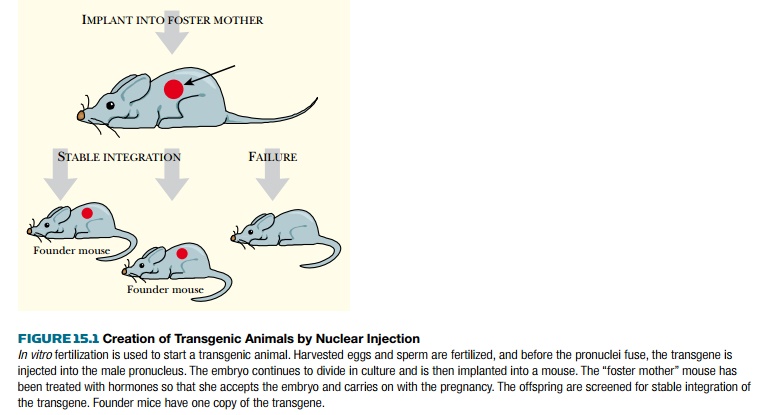Chapter: Biotechnology Applying the Genetic Revolution: Transgenic Animals
Creating Transgenic Animals
CREATING
TRANSGENIC ANIMALS
Once a suitable transgene is
available the standard scenario for the creation of a transgenic animal by nuclear microinjection is as follows:
1.
The transgene is injected into fertilized egg cells (Fig. 15.1).
Just after fertilization, the egg contains its original
female nucleus plus the male nucleus from the successful sperm. These two pronuclei will soon fuse together.
Before this happens, the DNA is injected into the male pronucleus, which is
larger and therefore a better target for microinjection. Nuclear microinjection
requires specialized equipment and great skill. The success rate varies from 5%
to 40% among various laboratories.
2.
The egg is kept in culture during the first few divisions of
embryonic development.
3.
The engineered embryos are then implanted into the womb of a female
animal, the foster mother. Here they
develop into embryos and, if all goes well, into newborn animals.
4. Some of the baby animals will have the transgene stably integrated into their chromosomes. In others the process fails and the transgene is lost. Those that received the transgene and maintain it stably are called founder animals. A male and female are mated together to form a new line of animals carrying two copies of the transgene (Fig. 15.1). Note that the founder animals contain only a single copy of the transgene on one chromosome, and are heterozygous for the transgene.


When two such founder animals
are bred together, 25% of the progeny will get two copies of the transgene and
will be homozygous, 25% will get zero copies, and the remaining 50% will get
one copy. Homozygous transgenic animals are most useful because if these are
further interbred, all of their descendants will get two copies of the
transgene.
There is some variability in
the timing of integration of DNA injected into the male pronucleus. In some
cases, the DNA integrates more or less immediately, so that all cells of the
resulting animal will contain the transgene. Less often several cell divisions
may happen before DNA integration occurs and the final result will be a chimeric animal, in which some cells
contain the transgene and others do not. Sometimes multiple tandem copies of
the transgene integrate into the same nucleus—such constructs are often
unstable and the extra copies are often deleted out over successive
generations. Integration of the incoming DNA into the host cell chromosomes
occurs at random. Often, this is accompanied by rearrangements of the
surrounding chromosomal DNA. This suggests that integration often occurs at the
sites of spontaneous chromosomal breaks.
Related Topics